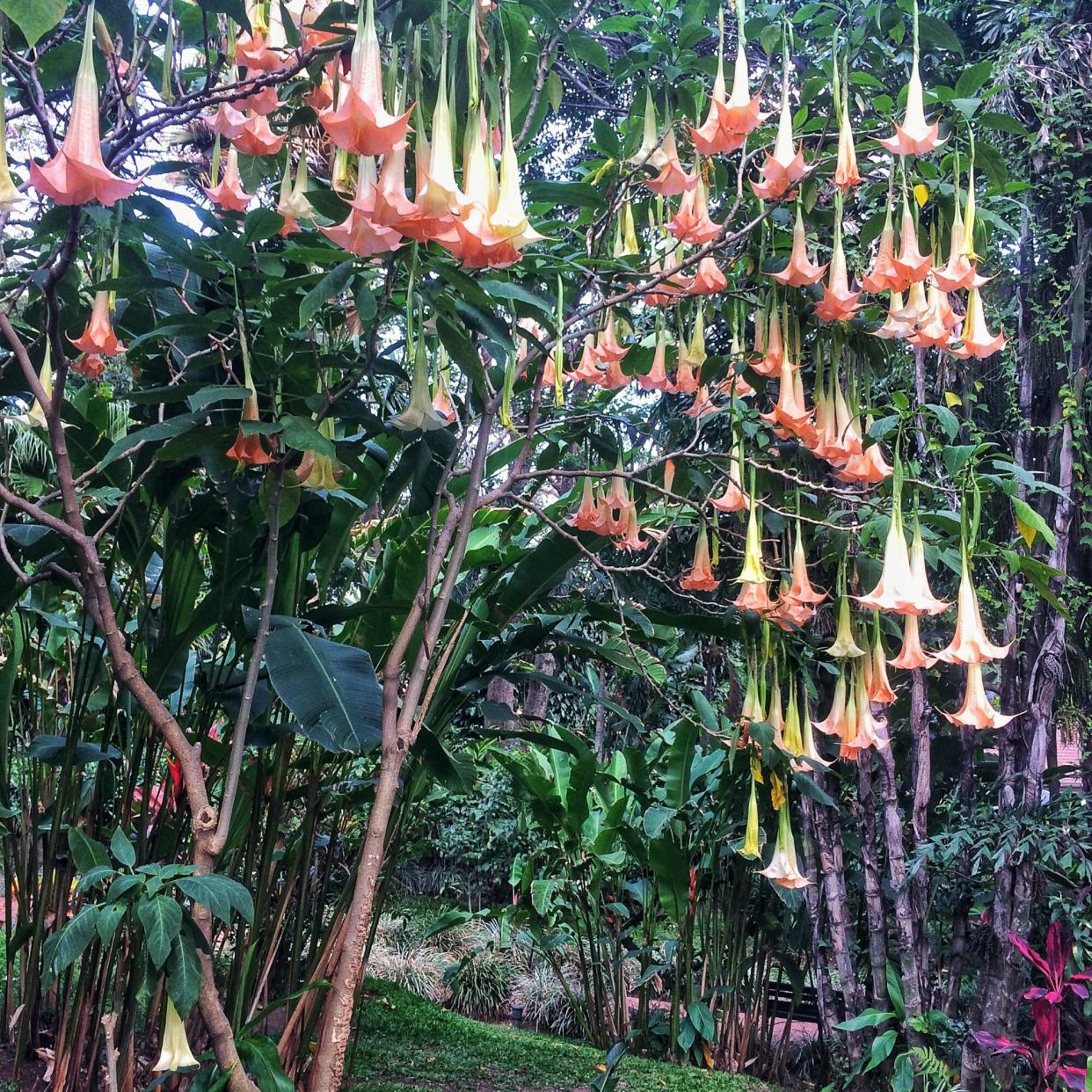Angel's Trumpet Keeps Tired Fall Gardens Blooming

Steve Bender
Can we talk? Early fall in the South ain't a great time for flowers. Months of heat and periodic drought turn many plants into botanical versions of grilled cheese. However, one perennial looks its best in the weeks ahead—angel's trumpet.
Angel's Trumpet Colors and Size
Native to Central and South America, angel's trumpet (Brugmansia sp.) represents a group of semi-hardy, woody shrubs or small trees that bear enormous, fragrant blossoms shaped like trumpets or the gowns of angels. Flowers may be single or double and come in colors of white, pink, yellow, gold, peach, and orange. I believe the one in the photo is 'Ecuador Pink,' a selection of Brugmansia versicolor. This is the most tree-like species and can grow 15-feet tall. Other species grow 6- to 10-feet tall, depending on how far south you live. The farther south you are, the bigger they get. Blossoms may reach 8- to 15-inches long and one plant may open dozens at a time. They make good, long-lasting cut flowers.
Growing Angel's Trumpet
Angel's trumpet likes sun and fertile, moist, well-drained soil. It's a pretty heavy feeder, so fertilize it with a water-soluble fertilizer every two weeks in spring and summer. It's fully hardy in USDA zones 9 and 10. In USDA zone 8, where I live, it often dies to the ground in winter and comes back the next year. North of here, in USDA zones 7 to 8, grow it as an annual or in a pot you can bring inside to a cool room for winter. It will likely defoliate, but don't worry, it isn't dead. Keep the soil barely moist and don't feed during this dormant time.
There's a Devil to This Angel
People often confuse true angel's trumpet with another Southern passalong, Datura, aka devil's trumpet. The two are easily distinguished. Angel's trumpet possesses pendulous flowers and long, beanlike seedpods. Devil's trumpet bears upright flowers and rounded, spiky seedpods.
Where to Find Angel's Trumpet
Because it doesn't bloom until fall, most nurseries don't carry angel's trumpet. (Plant Delights is a good online source for plants. Other online nurseries offer seed.) However, lots of folks get it, as I did, as a rooted cutting from a friend. Six-inch cuttings taken in August root quickly in water or potting soil.
Handle Angel's Trumpet With Care
Be careful not to ingest angel's trumpet—it is highly toxic to humans and pets. "Ingestion of the plants can cause disturbing hallucinations, paralysis, tachycardia, and memory loss and can be fatal," warns the Britannica Encyclopedia. Use protective covering when handling it and wash hands thoroughly after touching angel's trumpet, which can trigger allergic skin reactions in some.
Fall Garden Refresh
Along with angel's trumpet, there are more annuals and perennials that can add life and color to your garden in fall, including swapping summer plants that have fizzled out with cool-weather fall container plants. Fall is also a good time to grow vegetables like broccoli and greens, and plant trees, shrubs, and spring bulbs.
